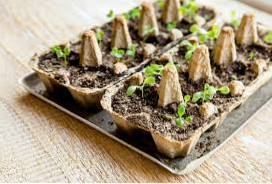- What is the best hedge for wildlife?
- Which is the fastest growing hedge?
- What plants are in a hedgerow?
- How do you make a wildlife hedgerow?
- Is a yew hedge good for wildlife?
- Is Beech Hedge good for wildlife?
What is the best hedge for wildlife?
Native shrubs and trees like hawthorn, field maple, blackthorn, beech, hornbeam and holly make an ideal mixture of hedging plants. Grow rambling plants, such as wild rose, bramble and honeysuckle, through your hedge to provide even more shelter and food for wildlife.
Which is the fastest growing hedge?
Leylandii - Green
Leylandii is a fast-growing hedge plant that has the quickest growth rate of approximately 75-90cm per year. Leylandii, also known as Cupressocyparis, is a stunning hedge plant that will add elegance to your garden.
What plants are in a hedgerow?
We recommend that the hedgerow be made up of predominantly Hawthorn (Crataegus monogyna), say 70%, with the 30% balance of species coming from three of the following, Field Maple (Acer campestre), Blackthorn (Prunus spinosa), Dog Rose (Rosa canina), Hazel (Corylus avellana), Holly (Ilex aquifolium), Guelder Rose ( ...
How do you make a wildlife hedgerow?
Make the most of your garden
Chose native trees and shrubs for a new hedge, e.g. hawthorn, beech, spindle, blackthorn, hazel, holly, field maple, buckthorn. Grow a variety of plants along the hedge bottom, e.g. dog's violet, garlic mustard and hedge woundwort. It will become a wildlife haven.
Is a yew hedge good for wildlife?
Our native evergreen Yew, the king of hedges and again, one of the best hedges for wildlife, is ideal for more formal, well clipped hedging. Yew is long lasting and a great source of food and shelter for birds with red berries in autumn /winter and secure nesting.
Is Beech Hedge good for wildlife?
Beech hedge plants can tolerate both sunny and partially shades sites, making it ideal for smaller gardens that may not get much sun exposure. ... Fagus sylvatica hedging offers huge wildlife value with the dense canopy of foliage making a fantastic shelter for nesting birds and small mammals such as hedgehogs.
 Planetagarden
Planetagarden



